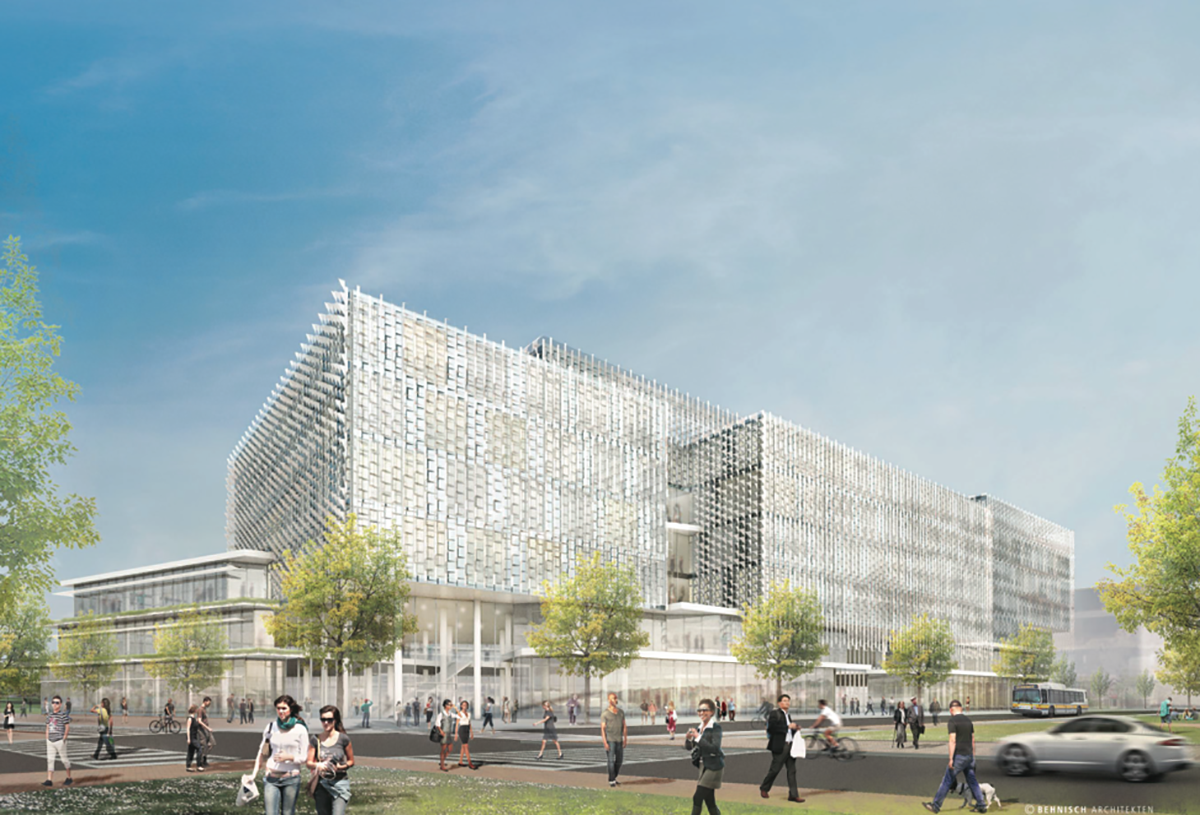Harvard Takes First Official Step on Lower Allston Expansion

Rendering by Behnisch Architekten, via Boston Redevelopment Authority
Harvard University took its first official step on its expansion into Lower Allston on Monday, filing plans with the Boston Redevelopment Authority for “activating Barry’s Corner” with the construction of its Science and Engineering Complex.
Designed by German firm Behnisch Architekten, the 496,850-square-foot project includes the renovation of 114 Western Avenue, and will provide classrooms, laboratories, and other facilities for Harvard’s John A. Paulson School of Engineering and Applied Sciences (SEAS). The project has been in the works since 2007, briefly stalled by economic downturn.
“The expansion to Allston will not only provide SEAS with much-needed space, but new kinds of space for teaching, active learning, and cutting-edge research,” Dean Francis J. Doyle III said in a release. “The building will be a boon for SEAS and for the broader Harvard College community.”
There are fewer parking spaces in these latest plans than initially proposed, as well as 70,000 square-feet of green space. The complex will accommodate an estimated 360 faculty and staff, and 1,600 students each day, according to Harvard’s BRA filing. The school says the influx of undergrads in particular will “generate new pedestrian, bicycle and shuttle bus trips throughout the day as students move between Cambridge and Allston.”
Construction is expected to begin next summer following a 30-day public comment period and BRA review. Harvard anticipates a 2020 opening.
“We’re pleased to see Harvard University move forward with plans for the Science and Engineering Complex in Allston, as this is an important step in the continued revitalization of the area around Barry’s Corner,” Mayor Martin J. Walsh said in a statement. “Harvard has the opportunity to build on the momentum of other successful projects in the neighborhood, and we’re eager to continue facilitating a dialogue between the University and members of the community during the review process.”
Barry’s Corner is a familiar battleground for those skeptical of “urban renewal.” As detailed in DigBoston‘s October feature, “The Land Boston Forgot,” the 9.3-acre area was the setting for a messy fight in the mid-1960s pitting Mayor John Collins and former BRA administrator Ed Logue against the neighborhood’s residents, whose homes were taken through eminent domain to make way for luxury apartments. “The only way they’ll evict me is when they carry me out in a casket,” said Anne Soricelli, the story’s hero, at the time.
The Boston Institute for Nonprofit Journalism, which produced the story, held a panel discussion on the gentrification of Allston-Brighton late last month, drawing parallels between Harvard’s plans and the past struggles in Barry’s Corner.

